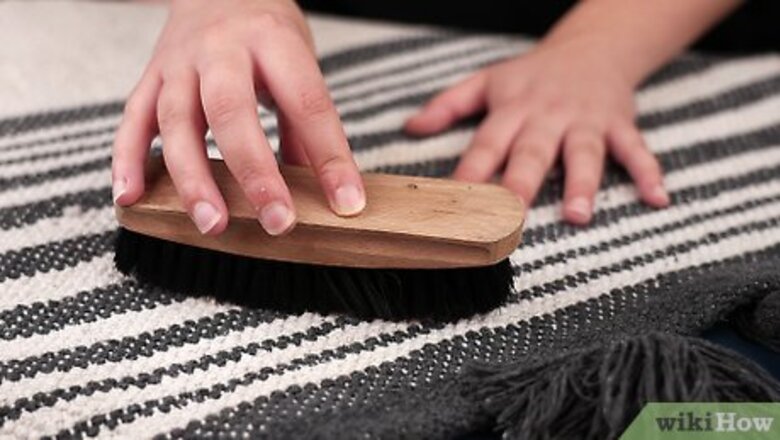
views
Deep-Cleaning Your Carpet
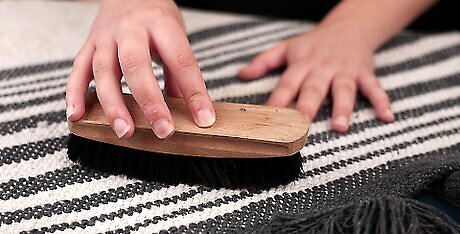
Brush the carpet before you vacuum to loosen dirt and grime. If your carpet is really dirty, simply vacuuming it might not be enough. To get a deeper clean, lightly scrub over the whole surface of your carpet with a soft-bristled carpet brush. This will lift out dirt and dust trapped deep in your carpet's fibers, making it easier to vacuum up. Once you get your carpet clean, brush it about once a week to keep it looking new. If you don't want to get down on your hands and knees, brush your carpet with a long-handled carpet rake before you vacuum.
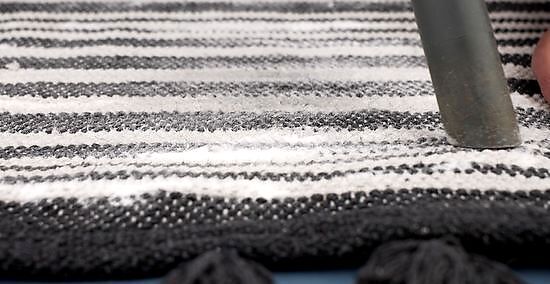
Sprinkle the baking soda in a fine layer over your whole carpet. An 8 oz (227 g) box of baking soda is enough to clean about a 10 ft × 10 ft (3.0 m × 3.0 m) area. Let it sit for a couple of hours to absorb any funky smells in your carpet, then simply vacuum it away! If your carpets are really grimy, try spritzing the baking soda with hot water after you sprinkle it on the carpet. Let the paste dry on your carpets for several hours before you vacuum.
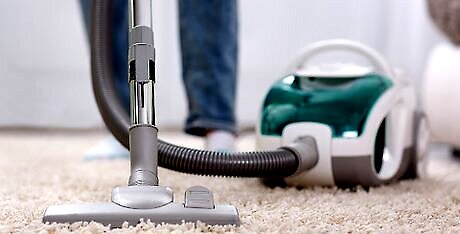
Vacuum the floor twice, moving in different directions each time. If you only vacuum a room in one direction, you'll only pick up dirt from one side of your carpet fibers. Instead, vacuum the whole room from one side to the other, moving in the same back-and-forth direction the whole time. Then, turn the vacuum at a 90° angle and vacuum the room again. Clean out the filter on your vacuum before you start to ensure you get the deepest clean.. Go through the room and pick up anything you don't want to suck up in your vacuum—from toys and loose change to larger pieces of dust or dirt. Also, move smaller pieces of furniture, like armchairs and side tables, so you can vacuum underneath them.

Use your vacuum's crevice tool along walls and in corners. Your vacuum head can't get all the dirt and dust that gets trapped along the edges of your carpet. That's what the crevice tool—that skinny, angled piece that attaches to the hose—is for. Run the angled tip all the way around the perimeter of the room, along the baseboards, and behind any furniture or fixtures you can't remove.
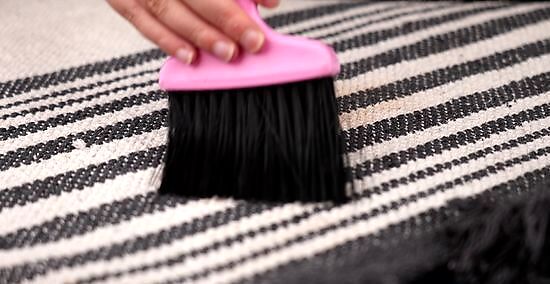
Sweep if you don't have a vacuum. It might not be as easy as vacuuming, but your broom can be a surprisingly effective carpet cleaner. Just work in short strokes, moving in the same direction. Once you get a little pile built up on the surface of the carpet, sweep it into your dustpan and keep going. Sweeping is especially helpful for removing pet hair and dust that have worked deep into your carpet fibers.
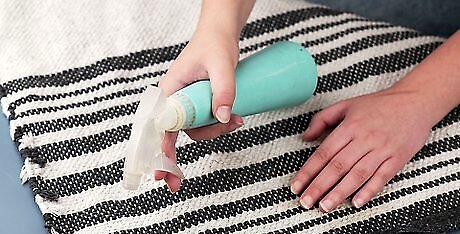
Mist the carpet with diluted vinegar to remove odors. Mix equal parts white vinegar and water in a spray bottle. Then, lightly spray the mixture over the whole carpet and let it dry. The vinegar smell will dissipate as the mixture evaporates, taking funky odors along with it. Don't soak the carpet—just use vinegar to lightly dampen it. Be sure to only use white vinegar. Colored vinegar, like apple cider or balsamic, could stain your carpet.

Get a deeper clean with carpet shampoo and a scrub brush. You don't have to have a machine to shampoo your carpet. Purchase a commercial carpet shampoo and follow the label instructions for mixing it up—usually, you'll dilute it in a certain amount of water. Working in small sections, use a scrub brush to dampen your carpet with the shampoo. Work the shampoo into the carpet with the brush, then let the area dry completely. Once your carpet is dry, vacuum up all of the shampoo. You can also mix the shampoo in a spray bottle and use that to mist the carpet. Don't saturate your carpet with the shampoo. If you use too much, your carpet will take longer to dry. This works best for carpets with a low pile. If you have a very plush carpet, it may start to look frayed if you scrub it regularly with a brush.
Spot-Treating Stains
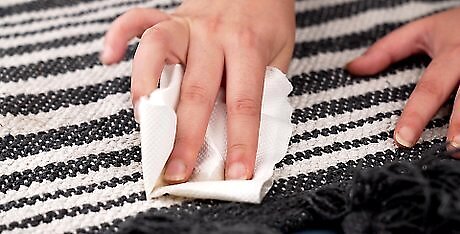
Blot up spills right away. Don't scrub, as this can set the stain deeper. Use a clean cloth or a paper towel, plus your cleaning product of choice, and dab at the outside edge of the stain with light pressure. Then, work in toward the center of the spot. This might seem like it will take longer, but it helps lift the stain rather than working it into the carpet fibers. Always work from the outside of the stain inward so you don't spread it around. As soon as you notice a spot or a spill, start cleaning it to keep it from setting in or getting worse. Stains that sit on the carpet can also end up leaking into the bottom of the carpet, causing mildew and odor.
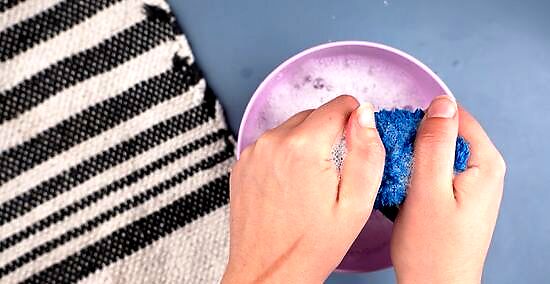
Treat fresh stains with plain or soapy water. If you move quickly, water works great on water-based spills like juice or soda. If the spot is really fresh, it can also be effective on tougher stains like blood or wine. Fill a bucket with clean, warm water, and add a few drops of dish soap if you'd like a little extra cleaning power. Dip a clean cloth or paper towel into the water, then gently pat at the stain until it's gone. When you're finished, press dry cloths or paper towels onto the stain until the carpet is dry.
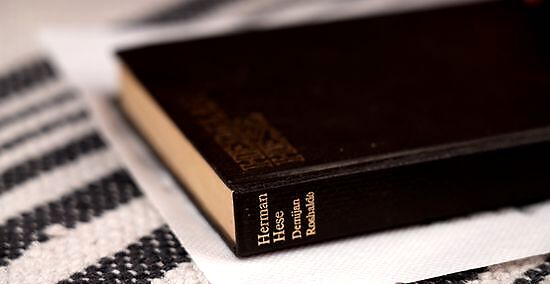
Deep-clean grime with vinegar and water. If you're removing a stain, spray or pour a 1-to-1 mixture of vinegar and water over the whole spot. Blot the area with a clean cloth or sponge, then rinse the spot with fresh water. Place clean cloths or paper towels over the area, and cover them with a book or something heavy until all of the water is absorbed. You can also add a few drops of dish soap to the water and vinegar for more cleaning power.
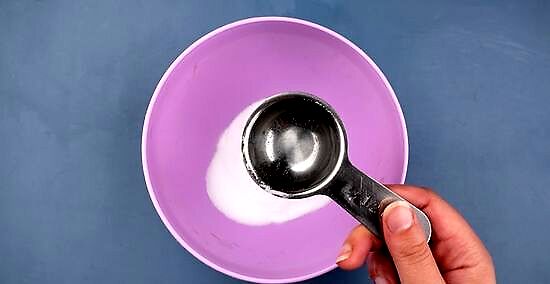
Try a salt and borax paste to lift set-in stains. Combine 1/4 cup (64 g) of salt, 1/4 cup (51 g) of borax, and ⁄4 cup (59 ml) of vinegar to create a paste. Spread this paste in a thick layer over stubborn carpet stains and let it sit for a few hours until it's completely dry. The paste should absorb the stain. Once it's dry, just vacuum the area. It might take a couple of passes with the vacuum to get all of the paste off of the carpet. Use a scrub brush to break it away from the carpet fibers if you need to.
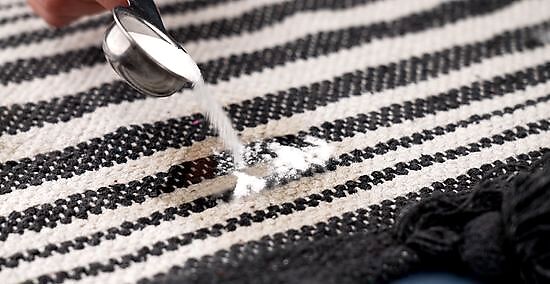
Absorb grease stains with a baking soda paste. Cover the stain completely with a layer of baking soda. Then, dip a sponge or rag in warm water and gently rub the baking soda to dampen it. Don't soak the carpet—just use enough water to create a thick paste. Let the baking soda sit in place for about 3 hours. It should absorb the stain as it dries. When the area is completely dry, vacuum your carpet or sweep away the baking soda with a stiff brush. You can use this for any type of stain removal, but it's especially effective at lifting out greasy spots left by fats like butter or gravy.
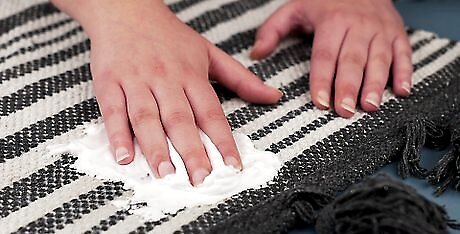
Lift tough stains with plain shaving cream. Shaving cream is surprisingly effective at removing all kinds of spots from carpeting, including oily or greasy stains. Just cover the stain with foaming shaving cream—not gel—and let it sit on the stain for about half an hour. Wipe the shaving cream away with a clean cloth, spray the spot with a little vinegar and water, and then blot the area dry with another cloth. This could discolor some carpets, so be especially sure to test it in a hidden spot before you use it on a large area.
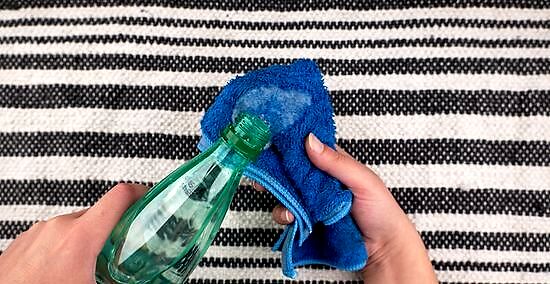
Use club soda for blood or wine spills. Just pour the club soda onto a dry cloth, then use the cloth to blot the stain. Keep blotting, using a fresh side of the cloth and more club soda until the stain is gone. Then, blot the area with a dry cloth to remove any excess club soda. If you don't have any club soda on hand, plain water will probably work just fine. However, some people do find that club soda works a little better on carpet stains. If the blood has dried, pour 3% hydrogen peroxide over the stain. Once it starts bubbling, wait 3-5 minutes, then blot away the hydrogen peroxide with clean cloths or paper towels. Just be aware that hydrogen peroxide can bleach your carpet.
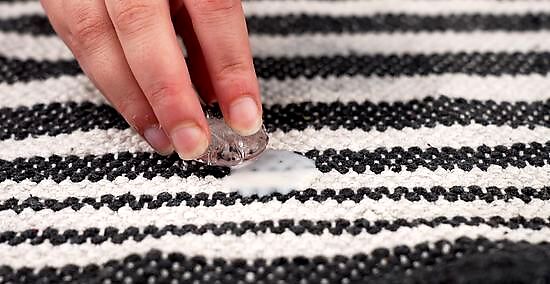
Rub ice over wax or chewing gum. Don't throw out your favorite rug just because a candle tipped over or you tracked gum in on the bottom of your shoe. Instead, rub an ice cube over the gum or wax for about 30-45 seconds to harden it. Then, either scrape away the hardened goo with a butter knife, or use scissors to carefully trim the carpet fibers out of the clump. If the ice trick doesn't work for a wax spill, cover the wax with a clean white cloth, then press a warm clothes iron to the cloth until the wax melts. Then, scrape away the melted wax with a spoon or butter knife.

Treat urine stains with an enzymatic cleaner. First, soak up as much of the stain as you can with a thick layer of paper towels. Rinse the area with water, then treat it with an enzyme-based cleaner. These cleaners are sold at most big box and pet supply stores, and they're really effective at removing the odor left behind after an accident. Unfortunately, if urine soaked into the padding under your carpet, it's nearly impossible to remove. It's best to replace that section of carpet and padding.
















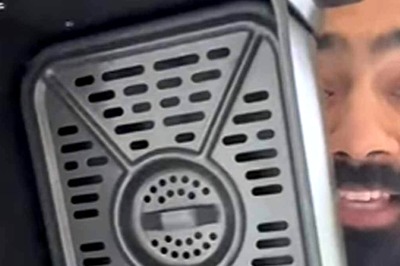

Comments
0 comment